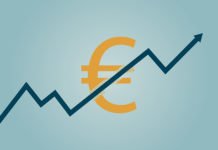In focus today
In the US, the August CPI is due, where we forecast headline inflation to ease to 0.1% m/m SA (2.5% y/y), while core inflation is expected to remain steady at 0.2% m/m SA (3.2% y/y). We foresee a gradual moderation in housing and non-housing services inflation following a modest rebound in July, and do not expect a CPI report in line with our forecast to materially change the pricing of Fed cuts.
In the UK, monthly GBP figures will be released, and the Bank of England will be aware of potential inflation risks from strong domestic demand.
In Sweden, Riksbank’s Breman speaks about the history of the Swedish economy and the current situation at 17.45 CET at a small-town business community. We do not expect her to send any monetary policy signals on this occasion.
Economic and market news
What happened overnight
In the US, Kalama Harris and Trump had their first presidential debate, where Harris delivered a convincing performance against Trump. While Trump focused on attacking the alleged shortcomings of the current administration, Harris delivered a more forward-looking vision. While Trump’s messages lacked clarity on his planned initiatives and key topics such as immigration, Harris stood out especially on her strong views regarding abortion, rule of law and foreign policy towards wars in Ukraine and Gaza. The overall tone on Trump’s comments was gloomy and threatening while Harris appeared more optimistic about the future. Leading up to the debate, prediction markets saw odds of both candidates essentially tied (50.5% to 49.5% in favour of Harris) but after the debate Harris is now seen as the clearer favourite (55% to 45%). This was the only presidential debate scheduled for the fall, although Harris’ campaign has already called for another one in October.
In Japan, Bank of Japan (BoJ) policymaker Junko Nakagawa stated that the central bank will proceed with its rate hikes if inflation aligns with forecasts, indicating that last month’s market turmoil has not altered their plans. This follows comments from policy board member Hajime Takata, who last week emphasized the need to stay on course with rate hikes while treading carefully to avoid volatile markets harming businesses.
What happened yesterday
In the US, The NFIB Small Business Survey fell to 91.2 in August, erasing July’s gain of 93.7, driven by concerns over inflation, labour shortages, and weaker sales expectations. Fed Governor Barr, the central bank’s regulatory chief, announced a revised “Basel III Endgame” plan, which will now impose a 9% increase in capital requirements for the largest lenders, instead of the 19% rise initially proposed last summer.
In the UK, the July/August labour market report was mixed. Wage growth was lower than expected at 4.0% (cons: 4.1%), while last month’s figure was revised up. The less volatile wage measure ex-bonus came in as expected at 5.1%. Similarly, the unemployment rate was also in line with expectations, down to 4.1% from 4.2%, but likely due to noise from the month prior. Employment growth increased in July, while payrolls in August were weaker than expected at -59k. Given the poor data quality of the LFS labour market data, the report should be taken with a pinch of salt as other indicators suggest a loosening labour market. Overall, wage growth remains elevated which is a concern for the Bank of England, keeping the central bank more cautious in this cutting cycle. We expect a cut in November, with pauses in September and December.
In Norway, headline inflation for August came in lower than expected at 2.6% y/y (cons: 2.7% y/y), while core inflation matched expectations at 3.2% y/y. Disregarding the effect of regulated kindergarten max prices, the core reading was 3.5% y/y – higher than expected but still below Norges Bank’s 3.6%-projection. The main surprise in core inflation, excluding the kindergarten factor, came from imported inflation, which increased from 1.4% to 2.0%. The rest of the surprise seems to mainly stem from rent, which rose from 4.2% to 4.5%.
In Sweden, July activity data came in weaker than expected, with the GDP indicator at -0.8% m/m SA. However, this should be taken with a grain of salt, as the indicator has been highly erratic. While other data indicate a dip in production, consumption, which makes up some 50% of GDP, surged. Albeit, it must be noted that this is summer data, making the seasonal adjustment a bit uncertain.
On the commodities front, oil prices continued to decline, dropping below USD 70/bbl in yesterday’s session amid concerns of oversupply. At the same time, OPEC lowered its global oil demand growth forecast for 2024 and 2025, citing sluggish economic growth, especially in China.
Equities: Global equities were higher yesterday, lifted by the US, tech, and cyclical growth sectors. Conversely, value and defensive groups did not just underperform; they were outright lower. Energy sectors took the hardest hit, with the price of Brent crude oil dropping below 70 dollars per barrel. Banks in both Europe and the US also saw declines, partly due to falling yields and regulatory changes (a Federal Reserve official on Tuesday announced revisions to a set of U.S. banking regulations that would roughly halve the extra capital the largest institutions need). In the US yesterday, the Dow closed down by 0.2%, the S&P 500 was up by 0.5%, the Nasdaq increased by 0.8%, and the Russell 2000 decreased slightly by 0.02%. Asian markets are lower this morning, and the same goes for European and US futures.
FI: Concerns of over-supply of oil sent yields lower driven by the break-evens. The 10y German bund ended 3bp lower at 2.13%. The decline in oil prices has led to a significant repricing of ECB expectations and while the 2024 ECB market pricing has been steady around the 60-65bp, markets continue to add to the 2025 segment and is now pricing 122bp of rate cuts from the ECB, which is a full 25bp rate cut more than just one week ago. Inflation markets are pricing the average HICP ex tobacco at 1.64% through 2025, which is below our expectations.
FX: In a two-split session risk and commodity sensitive currencies ended yesterday as the clear underperformers with notably EUR/NOK rebounding sharply during the US hours. The rally in fixed income benefitted the JPY and despite the USD staying firm USD/JPY still moved back to multi-month lows just above 142.












